1900: Publication of widely read novels
In 1900, Indiana developed a reputation as the "American heartland" after the publication of several widely read novels, beginning with Meredith Nicholson's The Hoosiers and Thompson's Alice of Old Vincennes.
1900: Presidential elections in Indiana
Since 1900, Republican candidate has defeated the Democrat by a double-digit margin on 14 occasions.
1900: Democratic presidential nominees carried Indiana
Since 1900, only five Democratic presidential nominees have carried Indiana.
1904: Charles W. Fairbanks elected Vice President
In 1904, Indiana Senator Charles W. Fairbanks was elected Vice President, serving under President Theodore Roosevelt until 1909.
1906: Creation of Gary, Indiana
In 1906, the United States Steel Corporation established Gary, a new industrial city on Lake Michigan, named after Elbert Henry Gary.
1909: End of Fairbanks's Vice Presidency
In 1909, Charles W. Fairbanks concluded his term as Vice President under President Theodore Roosevelt.
1909: Indianapolis Motor Speedway Construction
In 1909, the Indianapolis Motor Speedway was constructed, symbolizing the importance of vehicle and parts manufacture to the state.
1912: Eugene Debs Presidential Run
In 1912, Railroader Eugene Debs of Terre Haute, the Socialist candidate, received 901,551 votes, representing 6.0% of the national vote, in the presidential election.
1913: Thomas R. Marshall became Vice President
In 1913, former Indiana Governor Thomas R. Marshall began his service as Vice President under President Woodrow Wilson.
1913: Colts roots
In 1913, the Colts have roots back as the Dayton Triangles.
1915: Rise of the Indiana Klan
In 1915, the Indiana Klan was first organized as a branch of the Ku Klux Klan.
1916: Fairbanks's run for Vice President
In 1916, Charles W. Fairbanks made another run for Vice President with Charles Evans Hughes, but they lost to Woodrow Wilson and Thomas R. Marshall.
1918: Ball State University Founded
Ball State University was founded in 1918 as the East Division of Indiana State.
1919: Martial Law Declared in Gary
In 1919, Governor James P. Goodrich declared martial law in Gary due to labor union strike activities.
1921: End of Thomas R. Marshall's Vice Presidency
In 1921, Thomas R. Marshall concluded his term as Vice President.
1924: Indiana resident included in presidential election
Until 1924, a resident of Indiana was included in all but one presidential election.
1925: Klan Influence Peaks and Stephenson Charged
By 1925, the Klan had 250,000 members and influenced state politics significantly. That year, "Grand Dragon" D.C. Stephenson was charged with rape and murder.
1925: James Naismith visited state finals game
In 1925, James Naismith visited an Indiana basketball state finals game and claimed basketball really had its origin in Indiana.
1927: Stephenson's Revelations
In 1927, D.C. Stephenson, denied pardon, provided the Indianapolis Times with lists of people the Klan had paid, leading to the collapse of the Klan's membership.
1932: Franklin D. Roosevelt won Indiana
In 1932, Franklin D. Roosevelt won Indiana with 55% of the vote.
1932: McNutt Elected Governor
In 1932, amidst the Great Depression, Democrat Paul V. McNutt was elected governor of Indiana, initiating a state-funded welfare system and reorganizing state government.
1932: Purdue Boilermakers national champions
In 1932, the Purdue Boilermakers were selected as the national champions before the creation of the tournament.
1932: Roosevelt's victory in Indiana
Roosevelt's victory in 1932 was one of only five occasions since 1900 in which the state has favored a Democrat for president.
July 14, 1936: Record High Temperature
On July 14, 1936, Indiana's record high temperature of 116 °F (47 °C) was set at Collegeville.
1940: Indiana supported Wendell Willkie
In 1940, Indiana was one of only 10 states to support Republican Wendell Willkie.
1949: Indiana Schools Desegregated
In 1949, Indiana schools were desegregated.
1950: U.S. Census Bureau Report
In 1950, the U.S. Census Bureau reported Indiana's population as 95.5% white and 4.4% black.
1950: National Weather Service Data Start
National Weather Service data from 1950 through 2011 was used to rank Indiana eighth in a list of the top 20 tornado-prone states in a 2012 report.
1953: Colts official team
In 1953, the Colts became an official team after moving to Baltimore, MD.
1954: 181st Fighter Wing Stationed at Terre Haute Regional Airport
Since 1954, the 181st Fighter Wing of the Indiana Air National Guard was stationed at Terre Haute Regional Airport.
1954: Milan High School state champions
The 1986 film Hoosiers is inspired by the story of the 1954 Indiana state champions Milan High School.
December 8, 1964: B-58 Crash at Bunker Hill Air Force Base
On December 8, 1964, a Convair B-58 carrying nuclear weapons crashed and caught fire at Bunker Hill Air Force Base, causing radioactive contamination.
1965: University of Southern Indiana Founded
The University of Southern Indiana was founded in 1965 as the Evansville campus of Indiana State.
1967: Indiana Pacers play in the ABA
In 1967, the NBA's Indiana Pacers began play in the American Basketball Association (ABA).
1968: Marion County supported Republican candidates
From 1968, Marion County, Indiana's most populous county, supported the Republican candidates.
1970: Amendments to State Constitution Proposed
Beginning in 1970, a series of amendments to the state constitution were proposed, leading to the creation of the Indiana Court of Appeals.
1970: Indiana Population Exceeds Five Million
By the 1970 census, Indiana's population had grown to exceed five million.
1972: Lake County supports Democratic party
Since 1972, Lake County strongly supports the Democratic party and has not voted for a Republican.
1973: Oil Crisis Recession
In 1973, the oil crisis created a recession that negatively impacted the automotive industry in Indiana, leading to downsizing in companies like Delco Electronics and Delphi.
1975: Northwest Indiana steel producing center
Since 1975, Northwest Indiana has been the largest steel producing center in the U.S.
1976: Indiana Pacers joined NBA
In 1976, the Indiana Pacers joined the NBA when the leagues merged.
1980: Ancestry Claims
In the 1980 census 1,776,144 people claimed German ancestry, 1,356,135 claimed English ancestry and 1,017,944 claimed Irish ancestry out of a total population of 4,241,975 making the state 42% German, 32% English and 24% Irish.
1981: Boston Celtics won NBA championship
In 1981, Larry Bird led the Boston Celtics to the NBA championship.
1984: Boston Celtics won NBA championship
In 1984, Larry Bird led the Boston Celtics to the NBA championship.
1984: Colts relocated to Indianapolis
In 1984, the Colts relocated to Indianapolis, leading to an eventual rivalry with the Baltimore Ravens.
1986: Hoosiers Film Inspired by Milan High School
The 1986 film Hoosiers is inspired by the story of the 1954 Indiana state champions Milan High School.
1988: Dan Quayle elected Vice President
In 1988, Senator Dan Quayle was elected Vice President and served one term with George H. W. Bush.
1990: Population Growth Concentration
Population growth since 1990 has been concentrated in the counties surrounding Indianapolis, with four of the five fastest-growing counties in that area: Hamilton, Hendricks, Johnson, and Hancock.
January 19, 1994: Record Low Temperature
On January 19, 1994, the record low temperature in Indiana was −36 °F (−38 °C) at New Whiteland.
1994: Grissom Air Force Base realigned
In 1994, Grissom Air Force Base near Peru was realigned to an Air Force Reserve installation.
1996: Gubernatorial election year
In 1996, Indiana held its gubernatorial election concurrently with the United States presidential election, where the governor and lieutenant governor were jointly elected to a four-year term.
2000: United States Grand Prix
From 2000, the Indianapolis Motor Speedway hosted the United States Grand Prix (Formula One).
2000: Gubernatorial election year
In 2000, Indiana held its gubernatorial election concurrently with the United States presidential election, where the governor and lieutenant governor were jointly elected to a four-year term.
2000: Population Growth
Since 2000, Fishers has seen the largest population rise amongst the state's twenty largest cities with an increase of 100%.
2000: Largest Population Declines
Since 2000, Gary and Hammond have had the largest population declines regarding the 20 largest cities, with a decrease of 21.0% and 6.8% respectively.
2000: Marion County supported Republican candidates
Until 2000, Marion County, Indiana's most populous county, supported the Republican candidates.
2002: Rail Plan by Parsons Corporation
In 2002, Indiana implemented an extensive rail plan prepared by the Parsons Corporation.
2004: Gubernatorial election year
In 2004, Indiana held its gubernatorial election concurrently with the United States presidential election, where the governor and lieutenant governor were jointly elected to a four-year term.
2004: Marion County supported Democrats
In 2004, Marion County, Indiana's most populous county, backed the Democrats.
2004: Voting statistics in presidential election
In 2004, the Bay Area Center for Voting Research rated Gary and South Bend as liberal cities, and Fort Wayne, Evansville and Indianapolis as conservative cities based on voting statistics in the 2004 presidential election.
2005: Residence in Counties
In 2005, 77.7% of Indiana residents lived in metropolitan counties, 16.5% lived in micropolitan counties and 5.9% lived in non-core counties.
2005: Mitch Daniels became governor
In 2005, Mitch Daniels became the governor of Indiana after 16 consecutive years of Democratic governance.
2005: Base Realignment and Closure Proposal
In 2005, the Base Realignment and Closure (BRAC) Proposal stated that the 181st Fighter Wing would lose its fighter mission and F-16 aircraft, leaving the Terre Haute facility a general-aviation-only facility.
2005: Median Household Income
In 2005, the median household income for Indiana residents was $43,993.
2005: BRAC proposal
In 2005, under the BRAC proposal, Air National Guard fighter units at Terre Haute airport were to be consolidated at Fort Wayne, with the Terre Haute facility remaining open as a non-flying installation.
2005: Republicans dominate the governorship
Since 2005, Republicans have dominated the governorship and hold supermajorities in both chambers of the Indiana General Assembly.
April 2006: Statewide Daylight Saving Time
Since April 2006, the entire state of Indiana observes daylight saving time (DST).
2006: Increased Wind Capacity Estimates
In 2006, Indiana's wind capacity was estimated to increase from 30 MW at 50 m turbine height to 40,000 MW at 70 m, and to 130,000 MW at 100 m.
2006: Federal Funding Approval for Gary Chicago International Airport
In early 2006, a proposal to turn Gary Chicago International Airport into Chicago's third major airport received a boost with the approval of $48 million in federal funding over the next ten years.
2007: Indiana Department of Natural Resources Report
According to the Indiana Department of Natural Resources, as of 2007, there were 65 rivers, streams, and creeks of environmental interest or scenic beauty.
2007: End of the United States Grand Prix
In 2007, the Indianapolis Motor Speedway stopped hosting the United States Grand Prix (Formula One).
March 19, 2008: Enactment of "circuit breaker" law
On March 19, 2008, a "circuit breaker" law was enacted, limiting property taxes to 1% of assessed value for homeowners, 2% for rental properties and farmland, and 3% for businesses.
November 2008: Rebuilt Indianapolis International Airport
In November 2008, the Indianapolis International Airport was rebuilt, featuring a midfield passenger terminal, concourses, air traffic control tower, parking garage, and airfield and apron improvements.
2008: Barack Obama won Indiana
In 2008, Barack Obama won Indiana by a narrow margin of 50% to 49%.
2008: Gubernatorial election year
In 2008, Indiana held its gubernatorial election concurrently with the United States presidential election, where the governor and lieutenant governor were jointly elected to a four-year term.
2008: Marion County supported Democrats
In 2008, Marion County, Indiana's most populous county, backed the Democrats.
2008: Indiana University Shift of Associate Degrees
In 2008, the Indiana University system agreed to shift most of its associate (2-year) degrees to the Ivy Tech Community College System.
2010: Indianapolis Population Count
According to the 2010 census, Indianapolis is the largest city in Indiana with a population of 829,817.
2010: Largest Religious Denomination
Although the largest single religious denomination in the state is Catholic (747,706 members), most Hoosiers are members of various Protestant denominations in 2010.
2010: State Divisions
As of 2010, Indiana includes 16 metropolitan and 25 micropolitan statistical areas, 117 incorporated cities, 450 towns, and several other smaller divisions and statistical areas.
2010: Population Center
As of the 2010 U.S. census, Indiana's population center was northwest of Sheridan, in Hamilton County.
2010: Median Household Income
As of the 2010 census, Indiana's median household income was $44,616, ranking it 36th among the United States and the District of Columbia.
2010: Coal and Petroleum Reserves in Indiana
In 2010, Indiana's estimated coal reserves totaled 57 billion tons, with annual state mining operations producing 35 million tons of coal. Additionally, Indiana had at least 900 million barrels of petroleum reserves in the Trenton Field.
2010: Wind Capacity Estimates at Newer Turbine Height
In 2010, Indiana's wind capacity was estimated to be 130,000 MW at 100 m, the height of newer turbines.
2010: AAA bond credit ratings
Since 2010, Indiana has consistently held AAA bond credit ratings with the Big Three credit rating agencies, which is the highest possible rating.
2011: Population Estimates
Based on population estimates for 2011, 6.6% of the state's population is under the age of five, 24.5% is under the age of 18, and 13.2% is 65 years of age or older.
2011: Wind Turbine Installation
By the end of 2011, Indiana had installed 1,340 MW of wind turbines.
2011: CEO magazine ranked Indiana
In 2011, CEO magazine ranked Indiana first in the Midwest and sixth in the country for best places to do business.
2011: Tornado-Prone Cities Report
In 2011, South Bend was ranked 15th and Indianapolis ranked 8th among the top 20 tornado-prone U.S. cities.
2012: Marion County supported Democrats
In 2012, Marion County, Indiana's most populous county, backed the Democrats.
2012: Indiana Ranked Eighth in Tornado-Prone States
In a 2012 report, Indiana was ranked eighth among the top 20 tornado-prone states based on National Weather Service data from 1950 through 2011.
2013: Indiana produced more NBA players per capita
As of 2013, Indiana has produced more National Basketball Association (NBA) players per capita than any other state.
April 2014: New Public School Standards Adopted
In April 2014, modern, public school standards were adopted throughout Indiana, with the goal of ensuring students have the skills needed for college or the workforce.
2016: Climate Classification Update
As of the 2016 update, about half of Indiana is now classified as humid subtropical.
2016: Mike Pence elected Vice President
In 2016, Governor Mike Pence was elected Vice President and served one term with Donald Trump.
2016: Indiana Fortune 500 companies
In 2016, Indiana was home to seven Fortune 500 companies with a combined $142.5 billion in revenue.
2016: Marion County supported Democrats
In 2016, Marion County, Indiana's most populous county, backed the Democrats.
2016: Northwest Indiana produced American-made steel
In 2016, Northwest Indiana accounted for 27% of American-made steel.
2016: Indiana gross state product
In 2016, the total gross state product in Indiana was $347.2 billion.
2017: Indiana companies recognized in Fortune publication
In 2017, Columbus-based Cummins, Inc. and Indianapolis-based Eli Lilly and Company and Simon Property Group were recognized in Fortune publication's "2017 World's Most Admired Companies List", ranking in each of their respective industries.
2017: Indiana civilian labor force
In 2017, Indiana had a civilian labor force of nearly 3.4 million, the 15th largest in the United States.
2017: Indiana ranked first in government listing
In 2017, U.S. News & World Report ranked Indiana first in its inaugural Best States for Government listing, highlighting the state's budget transparency, government digitization, and fiscal stability.
2017: Indiana High School College Attendance Rate
In 2017, the rate of Indiana high school students attending college was 65%.
2020: Donald Trump carried Indiana
In 2020, Donald Trump carried the state of Indiana, defeating Joe Biden by a margin of 57% to 41%.
2020: Wind Turbine Capacity Doubled
In 2020, Indiana's wind turbine capacity more than doubled to 2,968 MW.
2020: Marion County supported Democrats
In 2020, Marion County, Indiana's most populous county, backed the Democrats.
2020: Indiana ranked as 10th hardest state to vote in
In 2020, a study ranked Indiana as the 10th hardest state for citizens to vote in.
2020: Population Count
In the 2020 United States census, Indiana recorded a population of 6,785,528.
2020: Largest Municipalities in Indiana
The state's twenty largest municipalities were listed based on the 2020 United States census.
2021: Indiana Graduation Rate
In 2021, the Indiana Department of Education reported the state's overall graduation rate.
2022: Homeless Population
According to HUD's 2022 Annual Homeless Assessment Report, there were an estimated 5,449 homeless people in Indiana.
2022: Indiana Graduation Rate Decline
In 2022, the Indiana Department of Education reported that the state's overall graduation rate was 86.7%, down one percent from 2021.
2022: Decline in College Attendance Rate
In 2022, the rate of Indiana high school students attending college fell to 53%, a significant decline from 65% in 2017, with widening gaps for ethnic minorities and low-income families.
2023: Gross State Product
In 2023, Indiana had a gross state product of 404.3 billion.
2023: University of Notre Dame Endowment
In 2023, the University of Notre Dame had the seventh largest endowment among private postsecondary institutions in the U.S. (11th overall).
Mentioned in this timeline
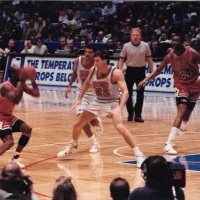
Basketball is a team sport played on a rectangular court...
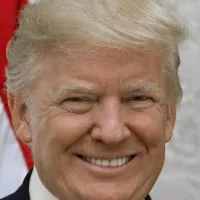
Donald John Trump is an American politician media personality and...
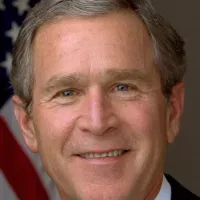
George W Bush the rd U S President - is...
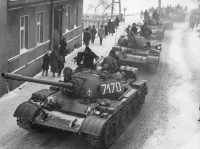
Martial law is the imposition of military rule in place...
India officially the Republic of India is a South Asian...
Myanmar also known as Burma is a Southeast Asian country...
Trending

2 months ago Trump Aides Advocate for Maduro's Ousting Amidst Venezuelan Political Turmoil and Criticism.

1 month ago Brooke Rollins' SNAP Benefits Criticism Sparks Controversy; Johnson Intervenes After 'Failed You' Comment.
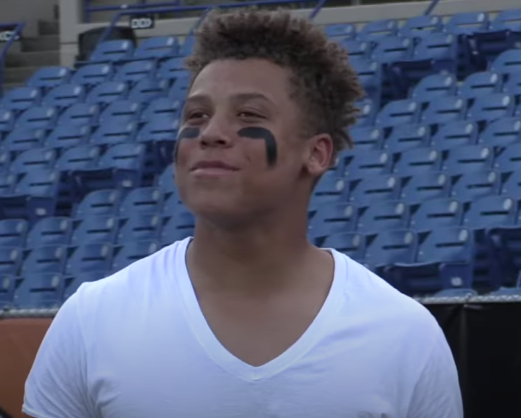
Jermaine Demetrius Burton is an American professional football wide receiver and return specialist currently playing for the Cincinnati Bengals of...
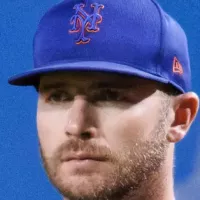
4 days ago Red Sox eye Pete Alonso: A potential franchise-altering acquisition for Boston.

Brett Rypien is an American professional football quarterback for the Minnesota Vikings He played college football at Boise State before...

7 months ago Gavin Newsom faces challenges in final term amid budget concerns and 2028 ambitions.
Popular
Matt and Ross Duffer known as the Duffer Brothers are...
Aftyn Alyssa Behn is an American politician currently serving as...

Candace Owens is an American conservative political commentator and author...

XXXTentacion born Jahseh Dwayne Ricardo Onfroy was a controversial yet...

Ilhan Omar is an American politician currently serving as the...

Harriet Tubman was a pivotal American abolitionist and social activist...
